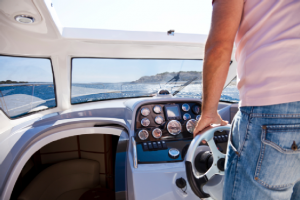 Why should I invest time and money into a boat that I won’t use during the winter? This is a common question that arises when it comes to taking the time to winterize your boat. Boat chores are never fun but keep in mind that winter weather can wreak havoc (cracked blocks, corrosion, etc.) on a boat that’s not prepared for hibernation.
Why should I invest time and money into a boat that I won’t use during the winter? This is a common question that arises when it comes to taking the time to winterize your boat. Boat chores are never fun but keep in mind that winter weather can wreak havoc (cracked blocks, corrosion, etc.) on a boat that’s not prepared for hibernation.
Winterizing is more than just sloshing in some fuel stabilizer, draining the engine and adding antifreeze. Consider it to be a methodical process that runs from bow to transom. Because boats and engines differ, start by checking the winterizing/storage sections of your owner’s manual.
Check the hull, looking for stress cracks (common around the bow eye) and gelcoat blisters. Stress cracks can indicate structural damage, and anything serious should be looked at by a professional.
Barnacles and any other unwelcome guests tagging along on your boat bottom should have their free-ride privileges terminated by scraping and then sanding any residue. A good pressure washing is in order to remove dirt and the dreaded sea scum.
Winter air can be humid or dry; both conditions can damage vinyl interiors. Moisture opens the door to mildew. More than one boat owner has unzipped his boat in the spring only to find mold and mildew everywhere.
Moisture is responsible for other things, like corroding your on-board electronics and electrical system. Remove any electronics that you can, and let them winter indoors.
If your boat has a removable head, clean and dry it before you store it. Built-in units, including sinks and showers, should be drained and pumped with antifreeze.
When choosing a boat cover, make sure the cover protects the waterline. Polyvinyl covers are often used for maximum water repellency and resistance to mildew and stains. Be sure the cover is securely tied down or taped so wind won’t get underneath the cover, blowing in snow or shredding the cover itself.
Winter’s biggest dangers to engines are freezing, corrosion and fuel degradation. Pull the engine cover and check for such problems as frayed or loose wires, connections and clamps. Check the condition of all hoses and replace those that are mushy or that show cracks. Check the condition of the belts and adjust the tension if necessary. Touch up any paint nicks to prevent corrosion. Run the engine up to temperature and change the oil and filter.
Flush the engine with fresh water. Idle the engine when flushing, making sure it doesn’t overheat, until the water flushes clean. Remember – even a small amount of water left in the engine can freeze and cause big damage.
To protect engine internals from rust and corrosion, remove the engine flame arrestor and spray fogging oil down the carburetor with the engine running. Shut off the fuel supply – either with the fuel valve or by pinching off the fuel line – to burn up the remaining fuel in the carb/fuel-injection system.
Now to the stern end; wedge a block of wood between the prop and antiventilation plate, loosen the prop nut and pull the prop. Check the condition of the prop, hub and splines.
Drain the gear case lube and look for a milky color, which would indicate water in the oil. Also look for metal chips.
To avoid time spent stuck on a trailer in the spring, be conscientious about winterizing your boat now!
Source: Popular Mechanics
Follow Us: Facebook – Foursquare – Twitter – YouTube – LinkedIn
